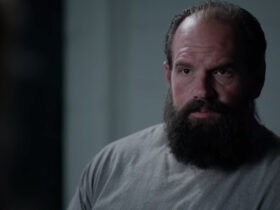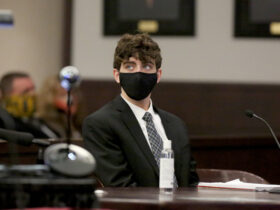The tranquil corridors of Ridgemont High School had witnessed countless events over the decades, but none as intense as the confrontation between Emma and Principal Figgins. This particular event has become something of a legend within the school’s community, not only for the passion displayed by both parties involved but also for the underlying issues that fueled the conflict.
What Led to the Dispute?
To truly understand the reasons behind the heated exchange, it’s crucial to dig deeper into the events that led up to it. Emma, a diligent student known for her integrity and commitment to justice, had always shown a keen interest in the welfare of her peers. She was someone who never shied away from voicing her concerns, be it in class or during student council meetings. Over the course of her high school journey, she had noticed several policies and practices that she felt were unfair or detrimental to the student body. Principal Figgins, on the other hand, was known for his strict adherence to rules and a no-nonsense approach to school governance. While he was respected for maintaining order and discipline, some saw his methods as outdated or overly rigid.
The Catalyst: An Unfair Policy
The straw that broke the camel’s back was the introduction of a new policy by Principal Figgins. This policy required students to stay back for two hours after school for minor infractions, such as being late or forgetting homework. Emma, along with many of her peers, felt that this was excessively punitive. Students involved in extracurriculars or those who had after-school jobs found it particularly challenging. They felt that this blanket approach failed to consider individual circumstances and was more of a hindrance than a tool for discipline.
Emma Takes a Stand
Unable to remain silent in the face of what she saw as injustice, Emma decided to take action. She began by organizing peaceful protests, circulating petitions, and rallying her fellow students to voice their discontent. Her efforts culminated in a scheduled meeting with Principal Figgins, where she would represent the student body’s concerns and seek a resolution.
The Confrontation
The day of the meeting arrived, and the atmosphere in the room was palpable. Both Emma and Principal Figgins were armed with their arguments, ready to defend their respective stances. Emma passionately articulated the students’ concerns, emphasizing the undue stress and disruption the policy caused. She cited numerous instances where the policy had negatively impacted students, using both empirical data and anecdotal evidence.
Principal Figgins, in his defense, stressed the need for discipline and order in the school. He believed that setting strict standards would prepare students for the challenges of the real world. However, as the discussion progressed, it was evident that his perspective was rooted more in tradition and control than in the genuine well-being of the students.
The Aftermath
The meeting, although heated, led to some constructive outcomes. Principal Figgins agreed to revisit the policy, taking into consideration the valid points Emma raised. A committee comprising students, teachers, and administrative staff was formed to review and suggest amendments.
While the policy wasn’t completely abolished, significant modifications were made to ensure it was more just and considerate of individual circumstances. Emma’s confrontation with Principal Figgins served as a testament to the power of voicing concerns and taking a stand for what one believes in.
The Power of Student Advocacy
In the world of academia, students are often seen as recipients of knowledge rather than active participants in their learning journey. Emma’s actions underscored the importance of student advocacy in shaping school policies. Her fearless approach highlighted that when students are empowered, they can drive positive change, reminding educators that policies should evolve based on students’ current needs.
The Evolution of Ridgemont High
Following the confrontation, Ridgemont High began to undergo a cultural shift. The incident sparked discussions around many other policies and led to a more inclusive decision-making process. Schools are dynamic environments, and this instance emphasized the need for adaptability in governance.
Modern Approaches to Discipline
Historically, many educational institutions leaned heavily on punitive measures to enforce discipline. However, Emma’s clash with Principal Figgins highlighted the pressing need to explore modern, rehabilitative approaches. Ensuring discipline should not come at the cost of stifling student growth or undermining their daily responsibilities and passions.
Building Bridges Between Administration and Students
This incident spotlighted a crucial aspect of school administration: open communication. Post this event, there was a noticeable effort to bridge the gap between students and administration. Regular feedback sessions and open forums were instituted, ensuring that student voices were consistently heard and considered.
Lessons in Leadership for Emma
Emma’s initiative wasn’t just a challenge to the establishment; it was a profound journey of personal growth. Leadership comes in various forms, and through this experience, she learned the nuances of negotiation, the importance of persistence, and the art of effective communication, invaluable skills for her future endeavors.
Principal Figgins’ Moment of Reflection
While the incident was undoubtedly a challenge for Principal Figgins, it also provided a pivotal moment of introspection. Leaders, even in positions of authority, must remain open to feedback and change. This confrontation was a lesson in humility and adaptability, underscoring that leadership involves continuous learning.
Conclusion
Emma’s confrontation with Principal Figgins wasn’t just about a singular policy. It was about the broader issue of student rights and the importance of listening to their concerns. This event serves as a reminder that institutions, no matter how rigid, can change when confronted with reasoned arguments and genuine passion. It’s a testament to the impact that a determined individual, even a high school student, can have when they stand up for what they believe is right.

































